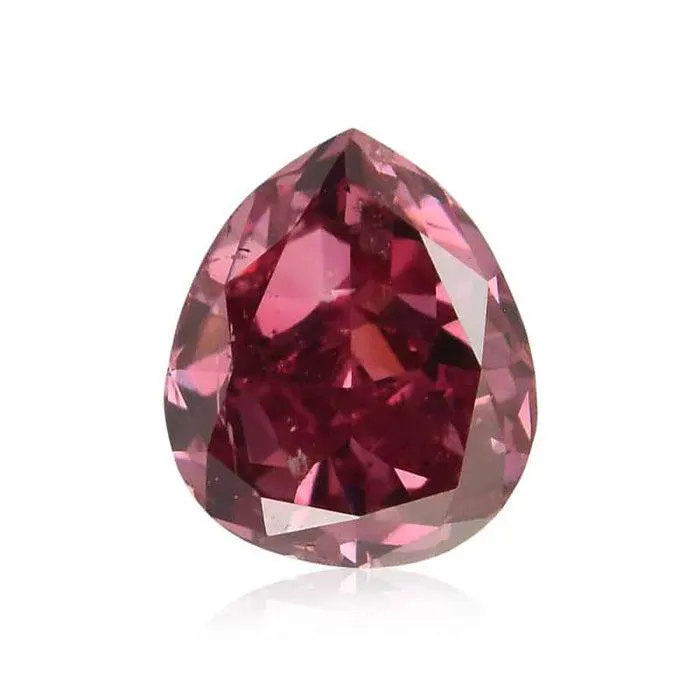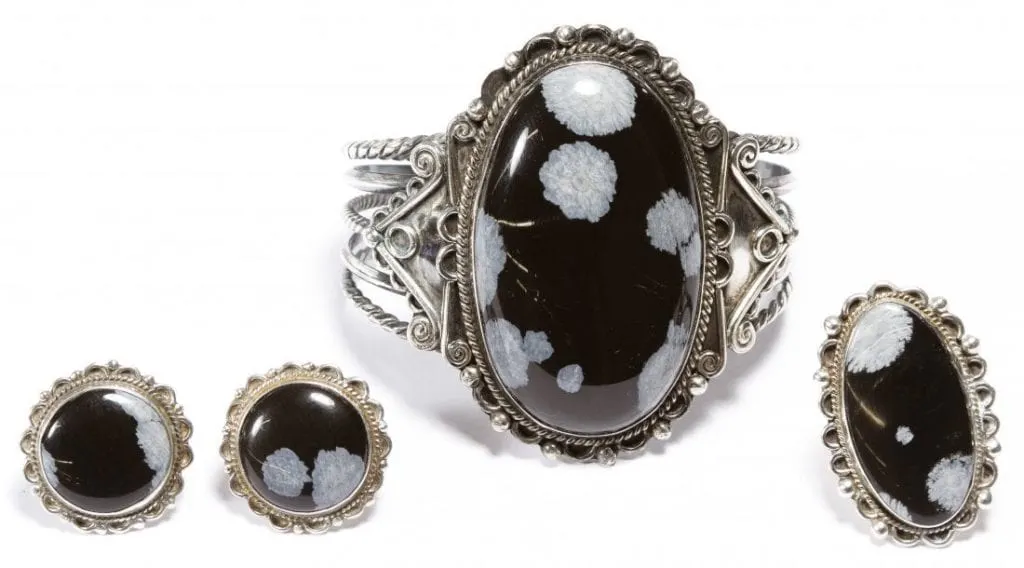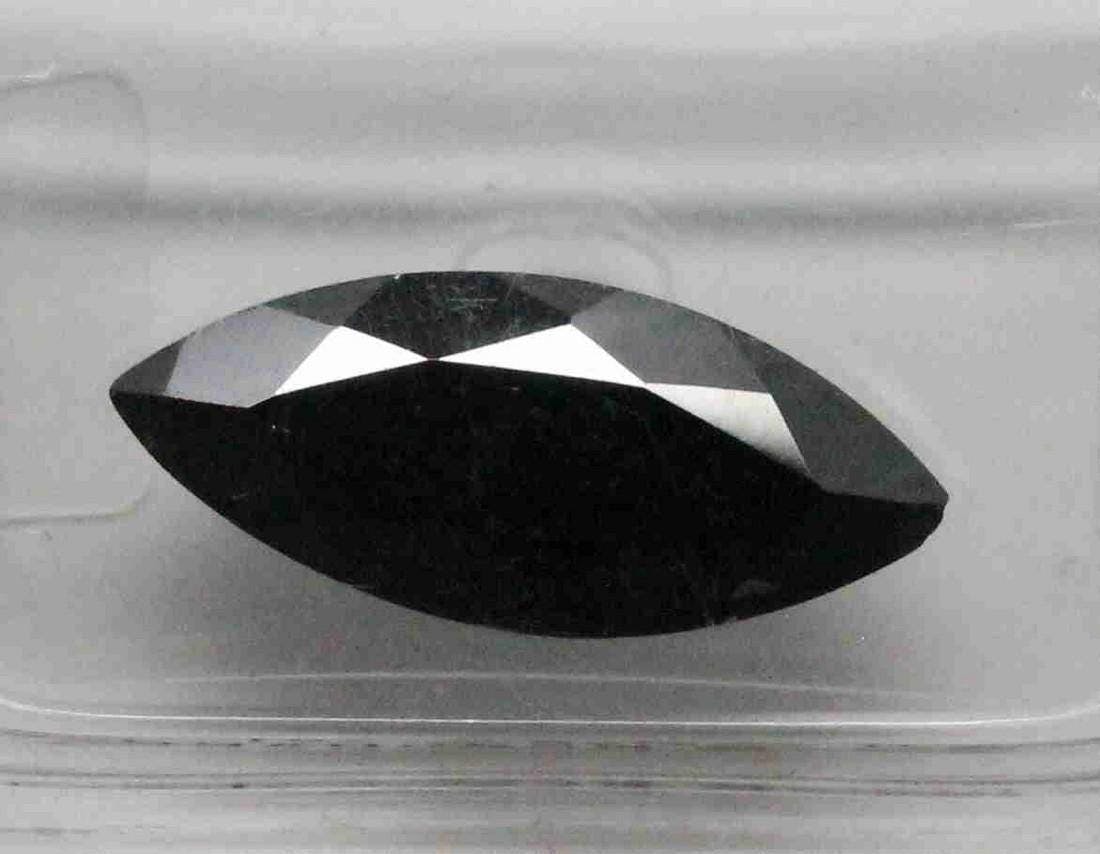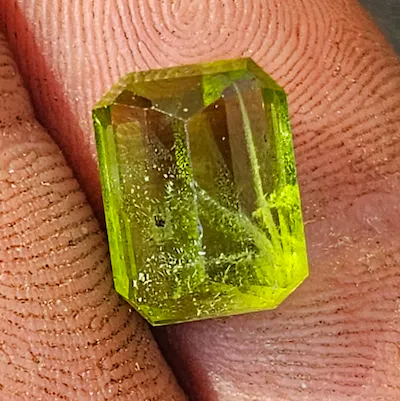News
Obsidian: A Versatile Material for Jewelry and Practical Objects
Obsidian, a versatile and captivating material, is widely used in the creation of jewelry and practical objects. This common form of natural glass can be found in a range of attractive varieties, such as banded, sheen, snowflake, mahogany, rainbow, and fire obsidians. Formed through volcanism, obsidian occurs in large pieces that can be cut into cabochons, beads, and carvings, although faceted pieces tend to have a darker appearance. With a hardness of 5-6, obsidian requires some care when cutting and wearing due to its brittleness, but its broken edges are remarkably sharper than steel. While transparent obsidians and those with cat’s eyes are rare and occasionally faceted, it is crucial to differentiate natural obsidians from artificial glass, as natural obsidians may contain crystallites and have distinct banding and needle patterns. Notably, the United States, particularly Arizona, Colorado, and California, is a significant source of gem-quality obsidian, along with Mexico and other countries. Proper care for obsidian involves using a lint-free cloth for cleaning and avoiding mechanical cleaning systems, while mild soap, warm water, and a soft brush can be utilized for gentle cleaning. It is important to be aware of other gemstones that may be mistaken for obsidian, such as jet, chalcedony, and schorl (black tourmaline), but standard gemological tests can aid in distinguishing them. Moreover, the market has been known to pass off rare colors of artificial glass pieces as natural obsidians, adding an element of caution to the acquisition of this remarkable material.

Types of Obsidian
Obsidian is a fascinating natural glass that comes in a variety of attractive forms. Some of the notable types include banded obsidian, sheen obsidian, snowflake obsidian, mahogany obsidian, rainbow obsidian, and fire obsidian. Each type has its own unique characteristics and visual appeal.
Banded Obsidian
Banded obsidian is characterized by its distinct striped patterns. These bands often vary in color and can create a mesmerizing effect when polished. Banded obsidian is highly sought after for its striking appearance and makes for eye-catching jewelry pieces.
Sheen Obsidian
Sheen obsidian, as the name suggests, has a beautiful sheen or luster that sets it apart from other types of obsidian. This sheen, also known as chatoyancy, gives the stone a shiny, reflective quality that adds a touch of elegance to any jewelry design.
Snowflake Obsidian
Snowflake obsidian is known for its unique snowflake-like patterns. This type of obsidian features white or grayish spots scattered throughout its black or dark-colored base. The contrasting colors create a visually appealing effect, making snowflake obsidian a popular choice in jewelry and decorative items.
Mahogany Obsidian
Mahogany obsidian is characterized by its deep reddish-brown color, reminiscent of the rich hue of mahogany wood. This type of obsidian often features subtle patterns and variations in tone, creating a warm and earthy aesthetic that is perfect for jewelry and ornamental pieces.
Rainbow Obsidian
Rainbow obsidian is a captivating type of obsidian that displays a stunning array of colors when light reflects off its surface. This iridescent effect is caused by tiny mineral inclusions within the obsidian, creating a mesmerizing play of colors. Rainbow obsidian is highly prized for its unique beauty and is often used in jewelry design.
Fire Obsidian
Fire obsidian is known for its radiant colors that resemble flames in a fire. This type of obsidian often exhibits a mix of warm, fiery hues such as red, orange, and gold. Fire obsidian is a popular choice for jewelry enthusiasts who want to add a bold and vibrant touch to their collection.
Formation and Appearance
Obsidian is a volcanic glass that forms when lava cools down rapidly without sufficient time for crystallization. This process occurs during volcanic eruptions where the lava is rapidly exposed to cool air or water. The result is a naturally occurring glass with a smooth and shiny surface.
Due to its volcanic origin, obsidian is often found in large pieces that can be cut and shaped into various forms. It is commonly used in jewelry-making, where it can be crafted into cabochons, beads, and carvings. When faceted, obsidian tends to appear dark, creating a mysterious and alluring effect.
Apart from its typical opaque appearance, obsidian can also exhibit unique properties. Transparent obsidians, although rare, can be found and occasionally faceted into gemstones. Additionally, some obsidians display a cat’s eye effect, where a band of light appears to move across the surface when viewed from different angles.
Physical Properties
Obsidian has a hardness of 5-6 on the Mohs scale, which indicates its resistance to scratching and abrasion. However, despite its hardness, obsidian is relatively brittle and should be handled with care. Its sharp broken edges are notorious for their ability to cut through materials, making obsidian sharper than steel.
When cutting or working with obsidian, it is important to wear protective eyewear and handle the material with caution. Although it can be shaped and polished, its brittleness requires precision and delicate handling to avoid accidental breakage.
Distinguishing Natural Obsidian
To distinguish natural obsidian from artificial glass, there are a few key factors to consider. Natural obsidian often contains inclusions such as small crystallites, which can be visible under magnification. These inclusions are the result of the rapid cooling process during volcanic activity.
Another characteristic to look for is straight banding and needles. Natural obsidian can exhibit straight and sometimes parallel bands or needle-like structures. These natural formations are a result of the unique cooling process and can help differentiate natural obsidian from artificially created glass.

Sources of Gem-Quality Obsidian
One of the major sources of gem-quality obsidian is the United States, particularly in states like Arizona, Colorado, and California. These regions are known for producing high-quality obsidian with attractive patterns and colors. Mexico is also a significant source of obsidian, with deposits found in various states. Additionally, obsidian can be found in other countries around the world, including Italy, Iceland, and New Zealand.
Caring for Obsidian
Caring for obsidian jewelry and objects is relatively simple. Cleaning can be done using a lint-free cloth to gently wipe away any dirt or smudges. For more stubborn stains, a soft brush and warm water with a mild soap can be used. It is important to avoid using harsh chemicals or abrasive cleaners, as they may damage the surface of the obsidian.
When storing obsidian, it is best to keep it separate from other jewelry pieces to prevent scratching. Additionally, it is advisable to avoid exposing obsidian to extreme temperature changes, as this can cause the material to expand or contract, potentially leading to cracks or fractures.
It is also important to avoid using mechanical cleaning systems, such as ultrasonic cleaners, on obsidian. The vibrations and high-pressure water can be too harsh for the delicate surface of the stone and may cause damage.

Substitutes and Confusions
Obsidian, with its unique appearance, can sometimes be mistaken for other gemstones or artificial materials. Some common substitutes and confusions include:
Jet
Jet is a type of black fossilized wood that shares a similar black color with obsidian. However, jet is organic in nature, while obsidian is a volcanic glass. Jet is often used in jewelry and can be polished to a smooth and glossy finish, resembling obsidian.
Chalcedony
Chalcedony is a type of cryptocrystalline quartz that comes in various colors, including black. Black chalcedony can resemble obsidian, but it lacks the glassy appearance and sharp broken edges. Chalcedony is often used as a less expensive alternative to obsidian in jewelry designs.
Schorl (Black Tourmaline)
Black tourmaline, also known as schorl, is a mineral that can resemble black obsidian. However, unlike obsidian, black tourmaline is a crystalline material and has a different internal structure. Black tourmaline is commonly used in jewelry and is prized for its protective properties.
To distinguish these substitutes from obsidian, standard gemological tests can be used. These tests can examine the optical and physical properties of the materials to determine their true identity.
Distinguishing Natural from Artificial
Distinguishing natural obsidian from artificial glass can sometimes be challenging, especially if the glass has been skillfully created to mimic natural patterns and properties. However, there are certain techniques and tests that can help determine the authenticity of an obsidian specimen.
Standard gemological tests, such as hardness testing and refractive index measurements, can provide valuable insights into the nature of the material. Natural obsidian has specific physical properties that can be compared to known values to identify its authenticity.
Additionally, rare colors of artificial glass may sometimes be passed off as natural obsidian. These colors can be captivating and may resemble the vibrant hues found in rainbow obsidian. Careful examination and consultation with a knowledgeable gemologist can help determine if an obsidian specimen is indeed natural or artificial.






